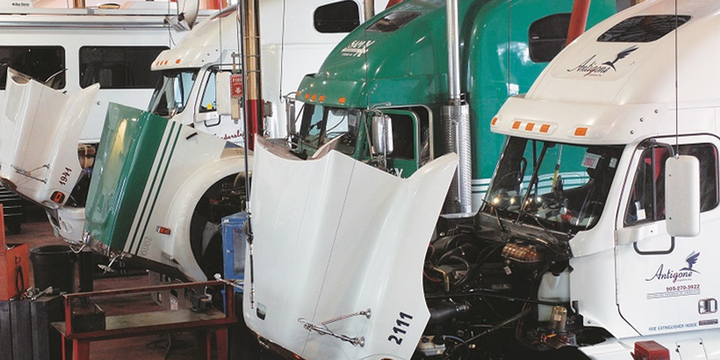Photo: Jim Park
The Technology & Maintenance Council of the American Trucking Associations has partnered with Decisiv to produce a new benchmarking tool designed to track part and labor costs.
Benchmarking allows an organization to measure its performance and compare it to that of other, similar businesses – and to discover areas where they can make improvements. But getting good benchmarking data can be a challenge.
The Technology & Maintenance Council of the American Trucking Associations has partnered with Decisiv to produce a new benchmarking tool designed to track part and labor costs. According to Mark Wasilko, vice president of marketing at Decisiv, the report is based on the more than 13,000 daily service and repair events and more than 7 million commercial assets being managed in the company’s Service Relationship Management platform. Data is collected from both U.S. and Canadian fleets.
The report will cover the nine Vehicle Maintenance Reporting Standards system-level events surrounding brakes, steering, tires, transmissions, charging, cranking, lighting, exhaust, and engines.
“We are strong proponents for VMRS because it provides the most accurate information,” Wasilko explains.
The VMRS info can help dealers and fleets see which repairs are happening most frequently so they can tailor technician training to the type of repairs being done.
“VMRS also gives the fleets the ability to accurately record all service events to get more accurate information on total cost of maintenance and total cost of ownership,” he says.
VMRS data allow fleets to spot common repair problems to see where they need to make improvements. It can even help them spot failure trends for a particular manufacturer’s product.
As for the benchmarking report, it is based on actual transaction data from fleet service events. This is more accurate than survey data that fleets may have used in the past to benchmark themselves, Wasilko says.
Decisiv processes 275,000 service events a month, but a service event can contain multiple operations. Those 275,000 service events mean 600,000 or more operations.
“The currency of the reported information will provide a new level of accuracy in the analysis of the actual cost of maintenance and reports that have never been available,” Wasilko says.
Fleets can use the report to see trends in different regions across the country and also in Canada.
If a fleet is operating in multiple regions, it can use the data to schedule repairs in regions where repair costs are lower.
“For example, if a fleet can save 4% to 5% on a repair, that savings goes right to their bottom line,” he says. “If I am a fleet, 4% to 5% back to my bottom line is significant.”
Wasilko also thinks fleets will be able to use the information from the study to negotiate better parts pricing.
“If [a fleet] is seeing a significant discrepancy between what they are paying for parts and what the benchmark average is, it opens the door for a conversation and negotiation on parts pricing.”
Initially the report will be available on a quarterly basis, but the frequency of the report could change depending on feedback from TMC members. Each report will have an overview and also will have data on each system-level code broken down by parts cost, labor cost, and total parts and labor costs. There also will be a trend analysis of what has occurred over the last five quarters.
“Being able to give fleets this information makes them better informed about what is actually happening in their own backyard as well as throughout the country,” he says. “I believe the data from the report will make fleets smarter across the board.”
This column first appeared in the June 2021 issue of Heavy Duty Trucking.

By Denise Rondini
Source: https://www.truckinginfo.com/




